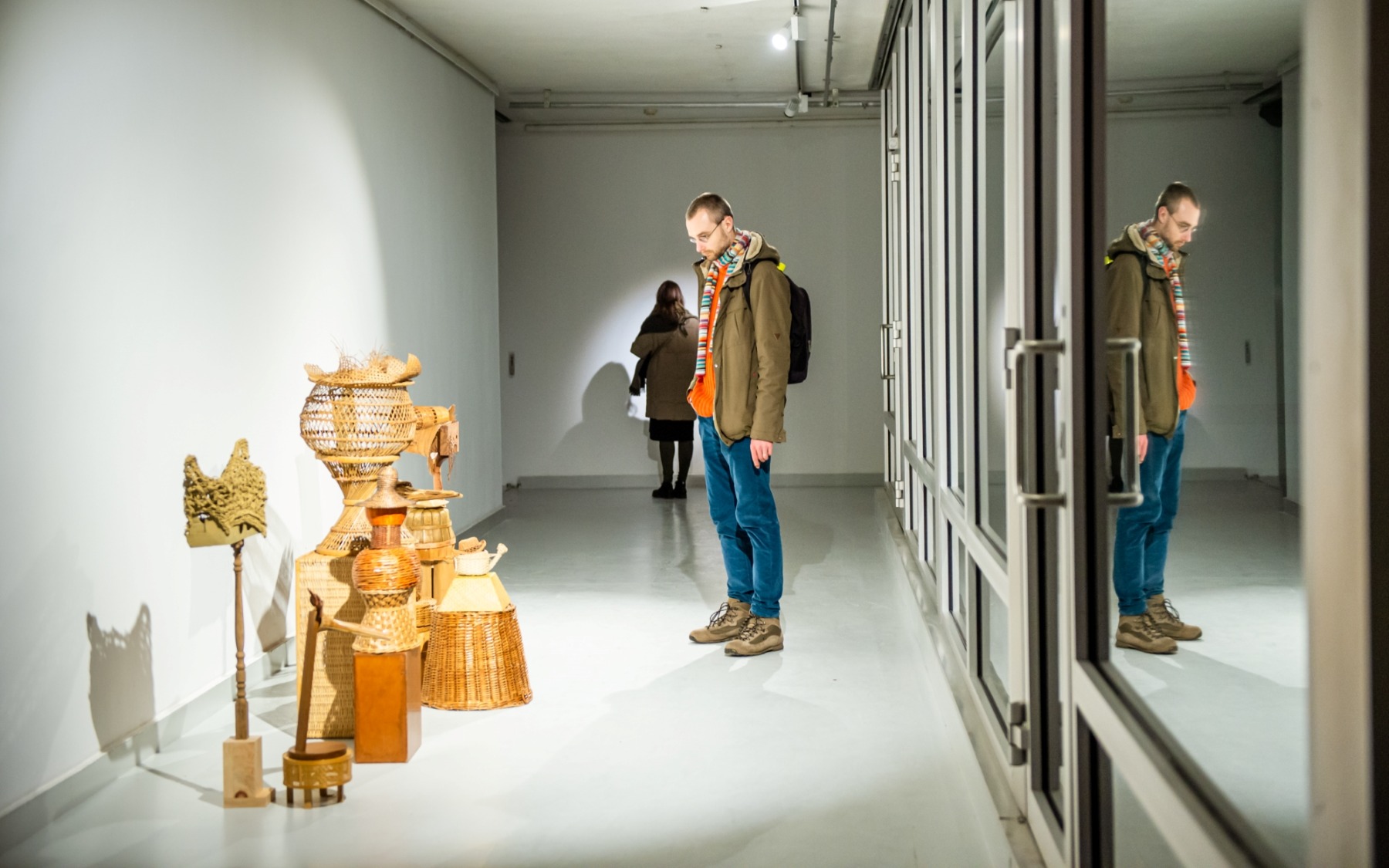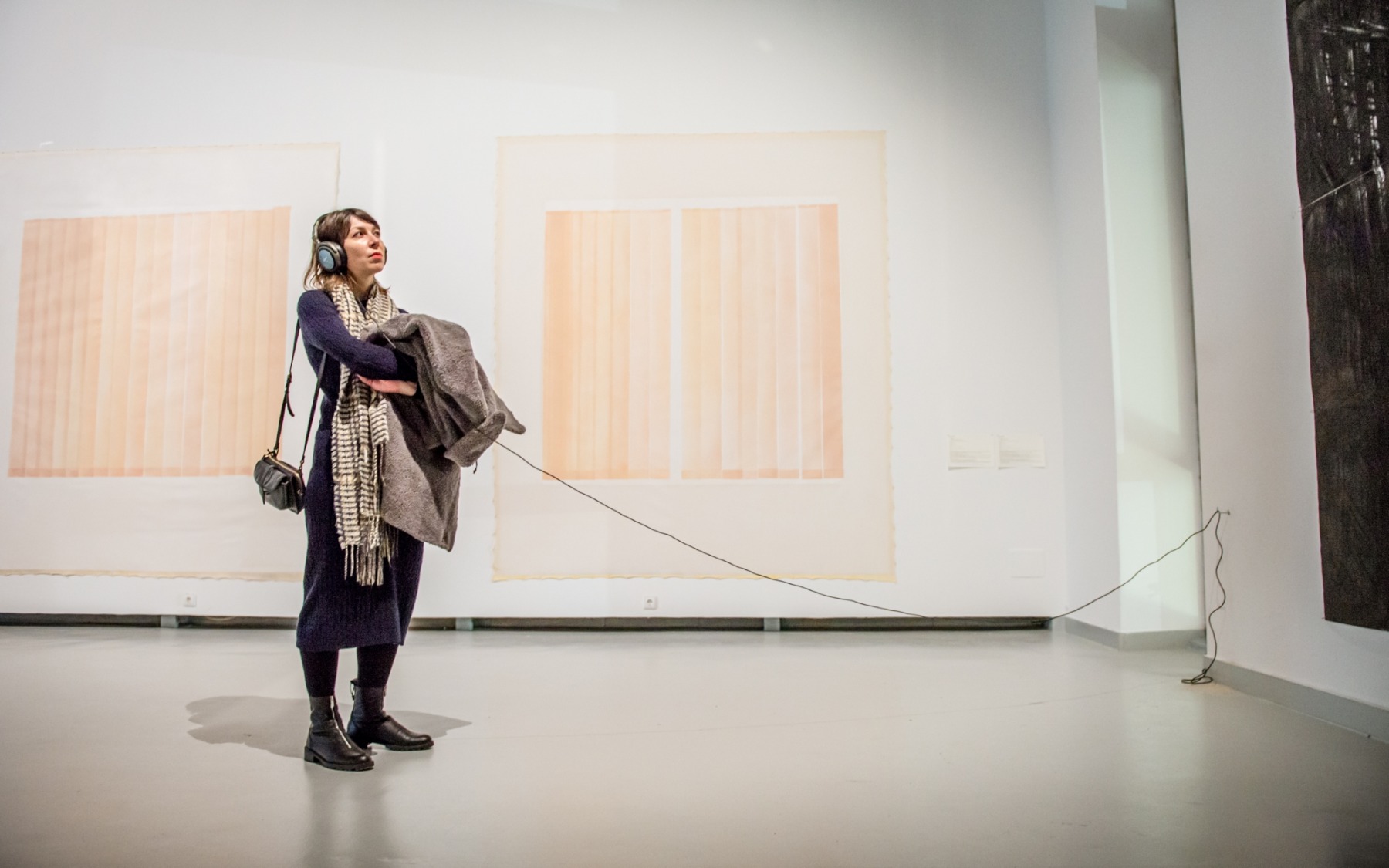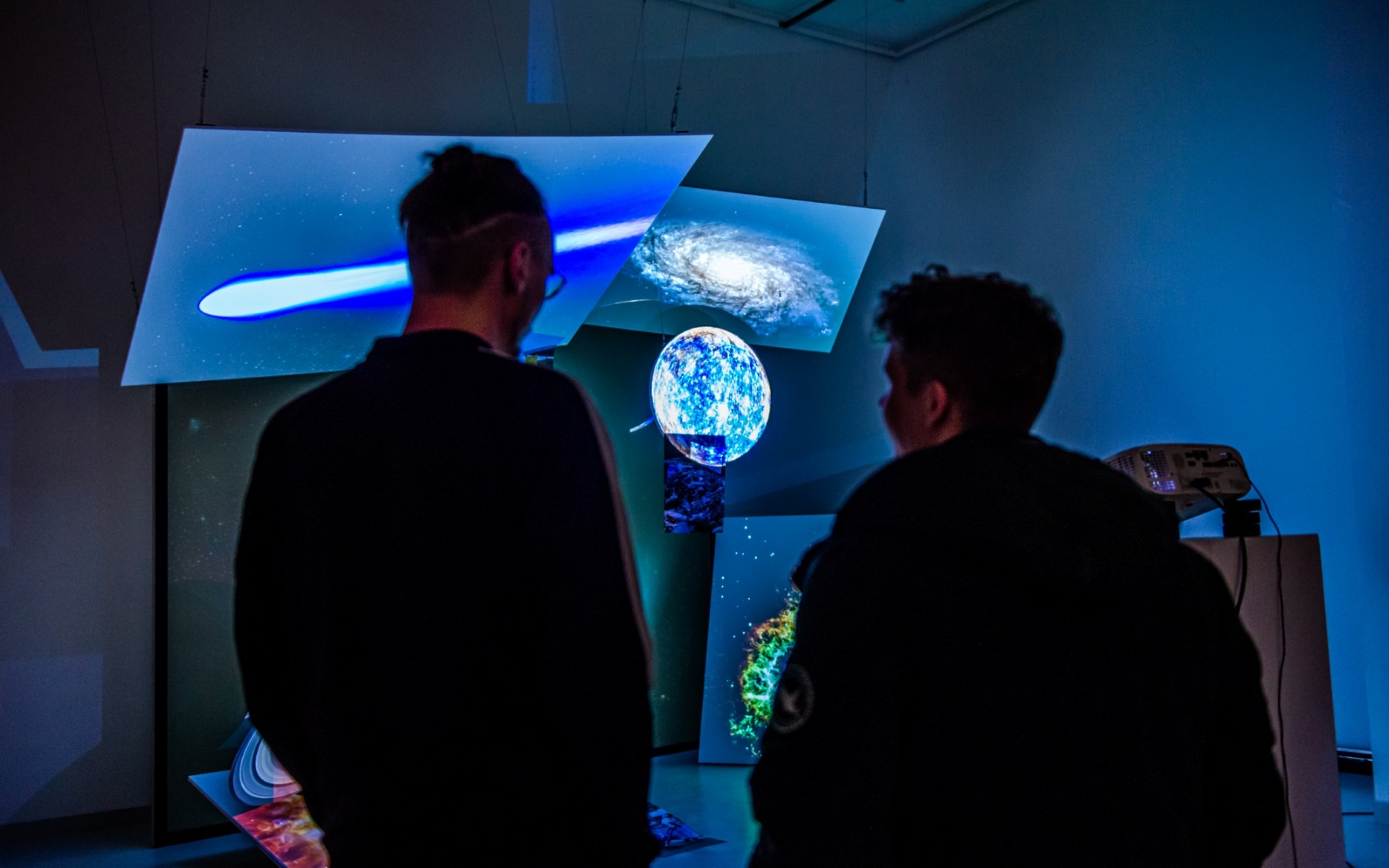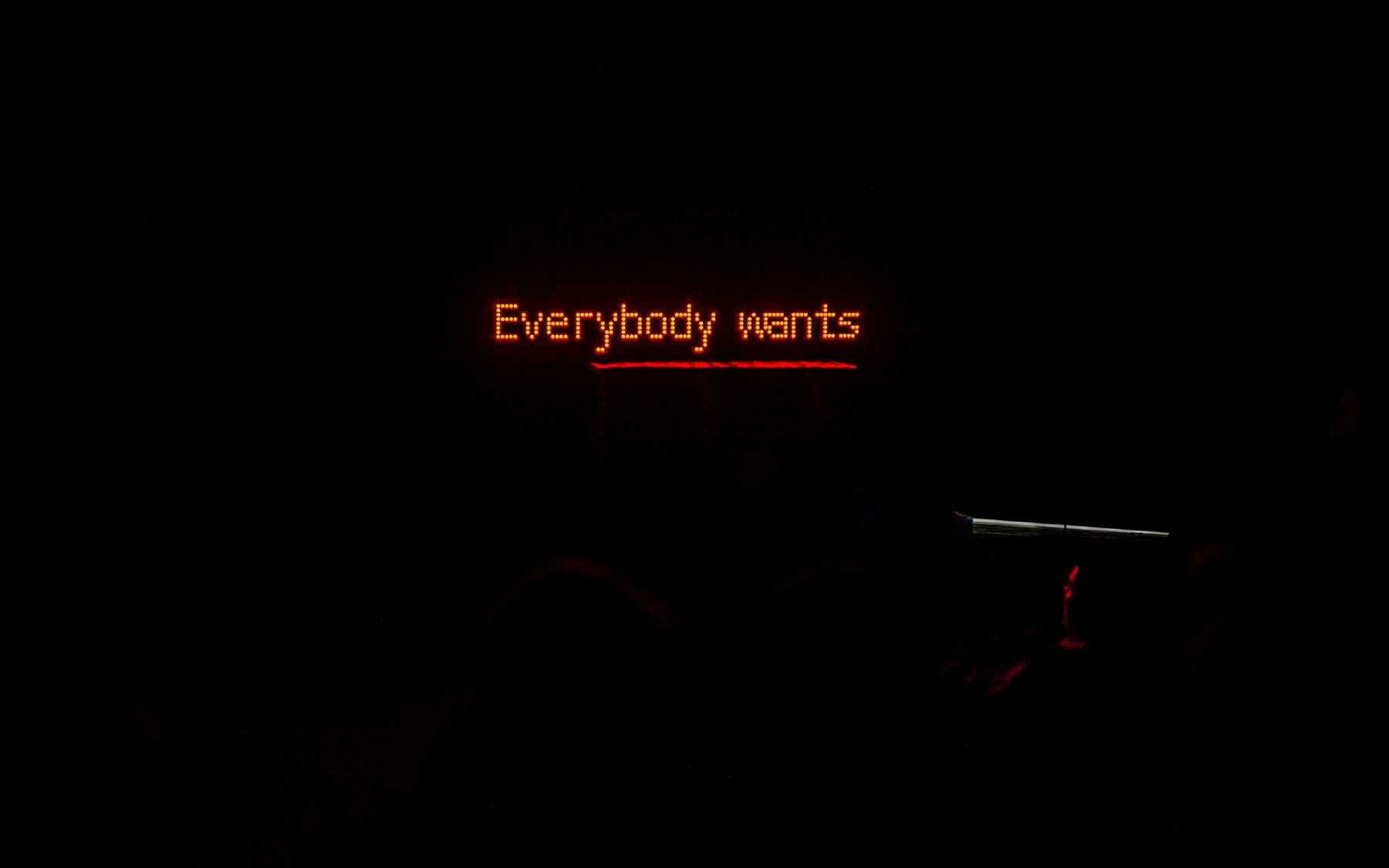
A Head With Many Thoughts
An express-interview with curators Neringa Bumblienė, Julija Fomina, Virginija Januškevičiūtė, Ūla Tornau and Asta Vaičiulytė
Through April 15, the Contemporary Art Centre (CAC) in Vilnius is presenting the large-format exhibition Head With Many Thoughts, curated by Neringa Bumblienė, Julija Fomina, Virginija Januškevičiūtė, Ūla Tornau and Asta Vaičiulytė. The invitation that they issued for the open call last autumn stated: ‘We would like to make an experiment – to invite anyone and everyone to propose ideas, projects, events and processes, anything that seems important, interesting to share or to experience with others.’ The response was astounding: they received more than 200 applications from a myriad of countries – and not only from professional artists. Some of the proposals will be implemented and presented in the future, or otherwise woven into the fabric of the CAC’s future activities. Meanwhile, several dozen artists, curators and collectives are currently featured in the exhibition Head With Many Thoughts.
Asta Vaičiulytė, Virginija Januškevičiūtė, Ūla Tornau, Julija Fomina, Neringa Bumblienė. Photo: Visvaldas Morkevičius
How did the idea to organise such an exhibition (an open-call show) arise?
Julija Fomina: The Contemporary Art Centre (CAC) was planning to close for renovation in the first half of 2020. And we thought that before closing our doors for a longer break, it would be great to try out something new – invite artists, curators, writers, producers and other enthusiasts to propose their ideas for one of the last projects of this phase of the CAC. In this way, it was a call for a timely reflection on the present and future of the institution(s) of contemporary art, on the moment of transition, and an invitation to share the urgencies of our times in general.
Exhibition "Head With Many Thoughts". Photo: Dainius Putinas
The title is Head with Many Thoughts. Is it possible to recognise a central line that goes through the whole exhibition?
Ūla Tornau: The title refers to the intensities of the exhibition, its polyvocal contents, and its organisational principles that considered the voices of more than 200 proposals, 60 artists, 5 curators, and the whole CAC team and beyond – everyone who was involved in the actual making of the exhibition, all of which was conceived and produced within three to four months. The proposals were indeed different – stretching from curatorial proposals for the group shows, to the amateur workshops and individual pieces of found objects. As our open call had no thematic framework, but was issued on the occasion of institutional change, many of the proposals somehow responded to our call of reflecting upon a specific time of transition – of a change, a process of alteration. Therefore, many works in the show are related through their reflections on time, and mostly – on the time of our present, which is often a very subjective time (or at least the perception of it is). Our curatorial premise is: ‘The exhibition is a polyvocal reflection on time, endings, beginnings, transition and change. It offers no single vision for the future – neither hopeful nor threatening – nor one direction of movement: the present time is marked by a range of simultaneous trajectories and multiple choices. Knowing what exactly our actions will change is not always possible; nevertheless, it is important and no less interesting to look out for what is unfolding in front of us, and to act. If the exhibition does not lie, it’s the gentle attentiveness, togetherness and care that help us face the uncertainty(..).’
Exhibition "Head With Many Thoughts". Photo: Dainius Putinas
Exhibition "Head With Many Thoughts". Photo: Dainius Putinas
There is an opinion that a new age of spirituality is starting right now. Does the exhibition in some way confirm that?
Neringa Bumblienė: I recently read an article on the rising popularity of astrology among well-educated audiences in the United States. The journalist concludes that we tend to look to the stars in times of financial and social turmoil.
However, we do not have works approaching things in this way in the exhibition. While working on the show and selecting sent applications, we noticed the contrary – artists are not looking into some great beyond for someone else to save them. Instead, they are doing what is possible to be done on their own and with the means that are at hand.
There are many artworks in the exhibition involving different communities – little everyday acts and even the sense of being together. One of the biggest video installations that we have, From Mother to Daughter by Maria Saivosalmi and Vytautas Puidokas, directly addresses physical proximity and delicacy among diverse communities and generations, wiping off markers between such dangerous definitions as ‘we’ and ‘they’. We chose this work to be this visible consciously, believing that care, amity and mindfulness are the best answers to the difficult present moment and vague horizon stretching in front of our eyes.
Exhibition "Head With Many Thoughts". Photo: Dainius Putinas
Art is the mirror of the time. What do we see within this show?
Asta Vaičiulytė: One thing we have noticed very clearly is that the works and artists in the show do not speak in grand narratives and utopian/dystopian categories. Instead, we see many different – and often times smaller and personal – gestures and stories as a way to navigate the rather overwhelming, contradictory and uncertain reality we find ourselves in. So we still have topics and issues that are global and unresolved, such as, for example, the migrant crisis, corporate and profit ideologies, etc., however, in this exhibition these topics are approached from either a very personal and human point of view, or with good humour and lightness. We see this as hope, and that the answer can be found in our responsibility and care for each other – in the small gestures each one of us can make, in our ability to see things for what they actually are, and to create and share. It is also a very visual show – very diverse in terms of themes, approaches, and artistic languages, and therefore it has many entrance and exit points.
Exhibition "Head With Many Thoughts". Photo: Dainius Putinas
You received about 200 applications. Were there any real (re)discoveries that have the potential to make an impact on the art scene?
Virginija Januškevičiūtė: I’d like to think that the real rediscovery is the amount of work that can be revealed and get done if one is paying attention – the variability of what gets shown and how. It’s been just over a week since the opening, and I have already heard many impressions and comments about the exhibition. ‘It’s nothing we’ve seen before,’ said a friend who’s been honestly and closely observing the local art scene for a long time. ‘It feels like I organised it myself,’ said an experienced art critic and curator with joy and surprise in her voice. ‘But that’s about me!’ – exclaimed several participants and future visitors alike, at the time when we were only just ‘trying out’ the title of the future exhibition. The compliment I hear the most is, ‘I’ll come back’, and indeed it is worth going back, because each artwork will open up to you more and grant you with more joy if you give the exhibition more time. Still, at the end of the day, this is just one version of what was possible.
From the very beginning, this project was the CAC’s experiment in opening up, and it’s safe to say it showed that many things get revealed through transparency and a certain ability to disappear (as individual agents, gatekeepers, pioneers, statement-makers, and other types of ‘heroic’ or institutional figures). Among our early inspirations was a performance by Meg Stuart, or rather the way she described it in her monograph Are We Here Yet?; it was a magnanimous piece that she produced by way of experimenting with a group of performers for days on end. She describes how challenging it was to tie everything that happened during the experiments into one piece, and how she felt that everyone who worked on it was ‘swallowed’ by it. Finally, during the performance, at some point one of them asks the audience: ‘Is there anyone who would like to replace me?’ Such intensity spoke plenty to us about our own need to find new ways to support the community – a need that we felt strongly at the time and that we’ll continue to face. I think our exhibition destabilized, at least a little, what is considered event-making in our field, and this will breed new energies.
Exhibition "Head With Many Thoughts". Photo: Dainius Putinas